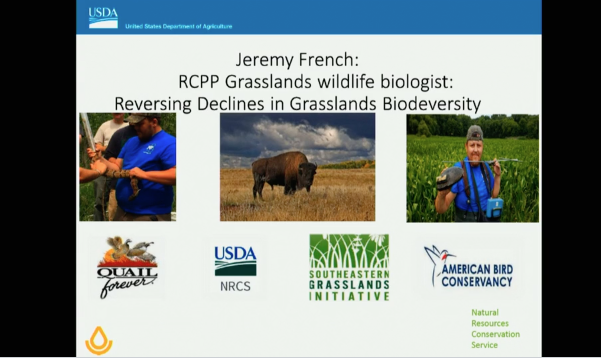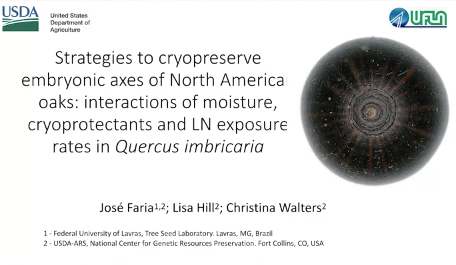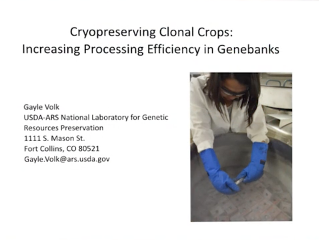
Jeremy Frencha and Brittney Viers, Quail Forever/Southeastern Grasslands Initiative The southeastern region of the U.S. was one of the most diverse grassland regions of North America, yet more than 99% has been lost due to such factors as conversion to row crop agriculture, forest succession, and wetland drainage. Reversing the decline in grassland biodiversity will […]
Read More…

Jose Faria, Lisa Hill, Christina Walters, Tree Seed Laboratory, Federal University of Lavras, Brazil, USDA-ARS, National Center for Genetic Resources Preservation, United States Quercus imbricaria is included in the red oak group (Lobatae) and is broadly distributed in the Midwestern US. The embryonic axes are about 1 mg dry mass and have 0.68 g H2O/g […]
Read More…

Gayle Volk, USDA ARS National Laboratory for Genetic Resources Preservation, United States The USDA-ARS National Plant Germplasm System has over 30,000 clonally maintained accessions within its field, screenhouse, greenhouse, and tissue culture collections. These fruit, nut, tuber, and bulb crop collections are usually not duplicated at secondary locations and are vulnerable to biotic, abiotic, and climatic threats. Only about 15% of […]
Read More…


